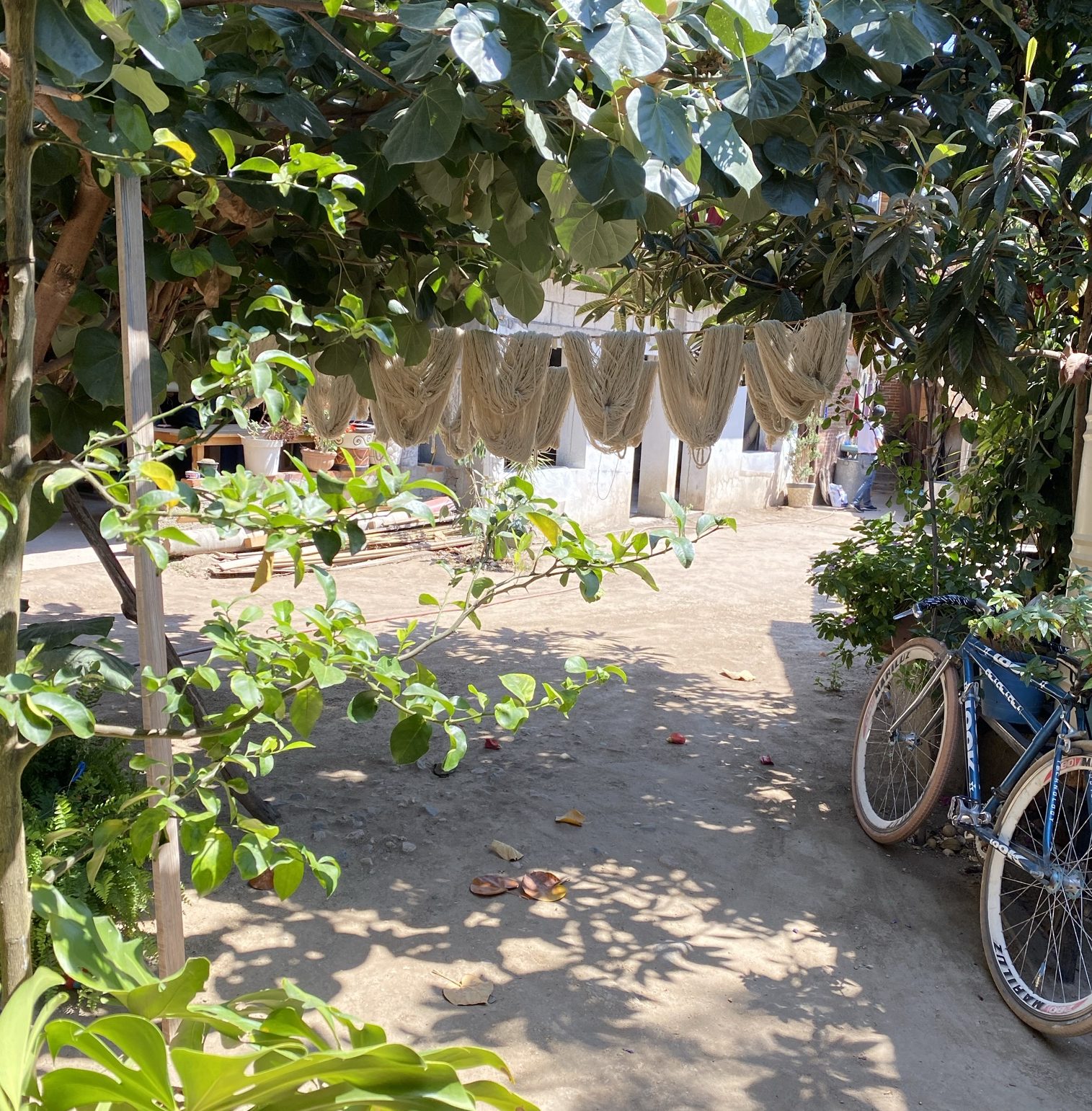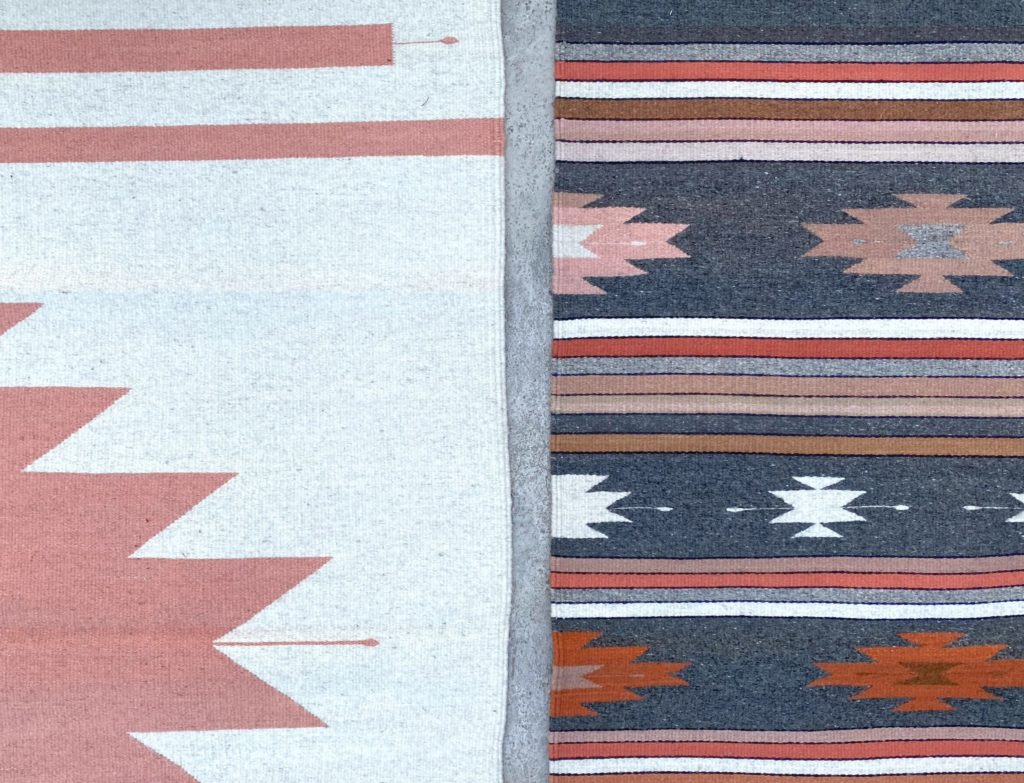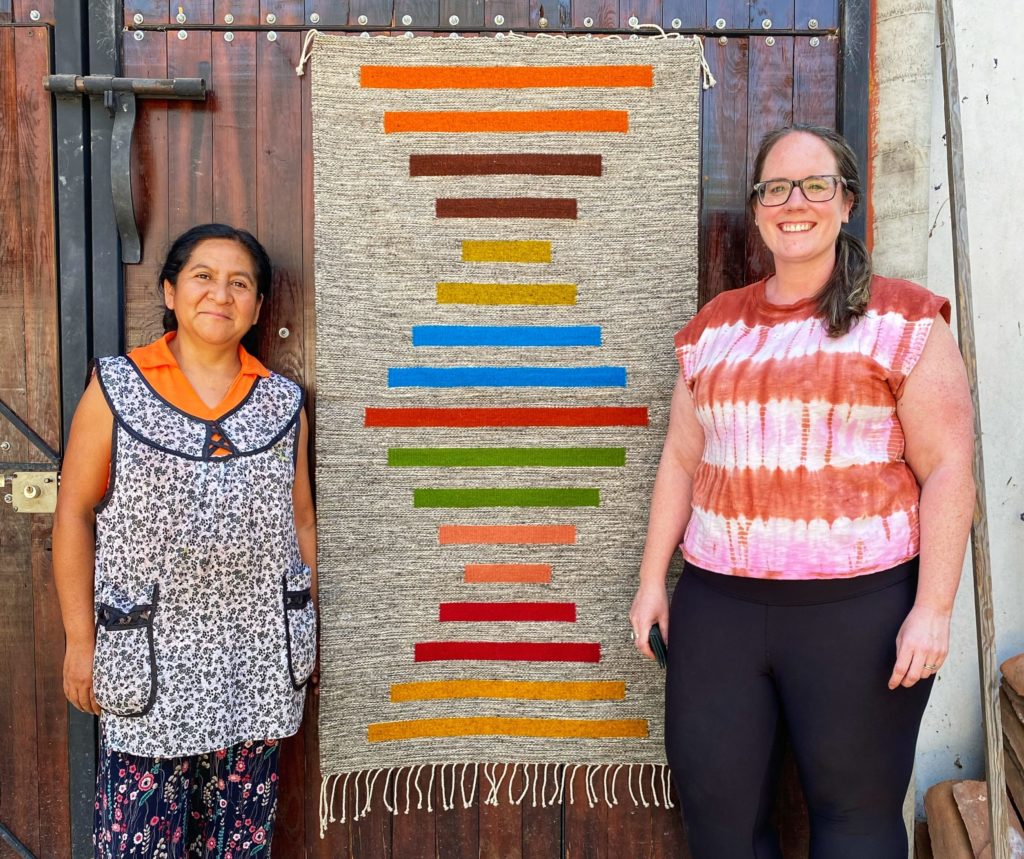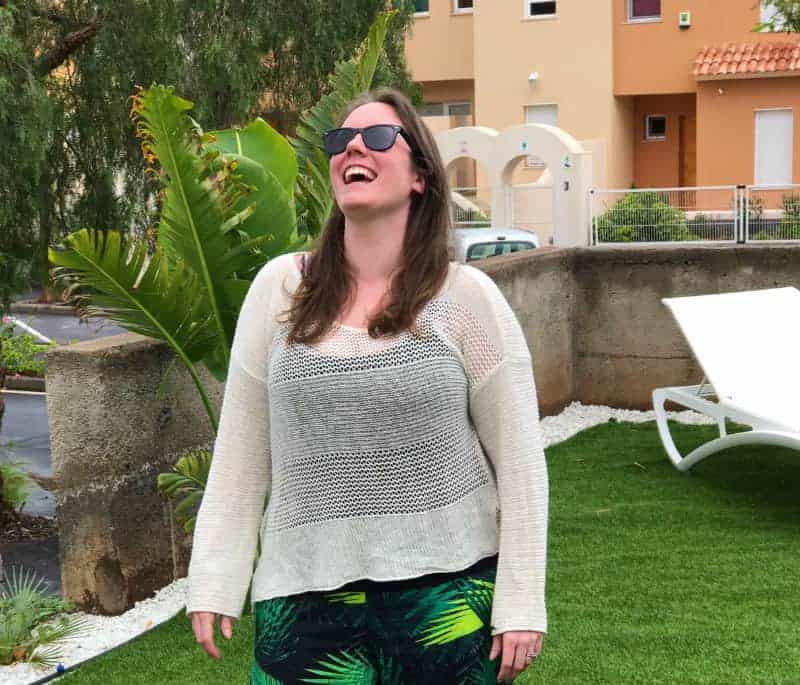We often celebrate firsts: the first person on the moon, the first to invent the lightbulb, or the first and fastest in a racecar. But what about an everyday first that is still just as extraordinary? The Vida Nueva Women’s Weaving Cooperative just outside Oaxaca City, Mexico, accomplished just that.
(This story was originally told by founder Pastora, translated and paraphrased. We met on an incredible trip hosted by Purposeful Nomad: Travel with Intention.)
In Teotitlán del Valle about thirty years ago, women were struggling. They had weathered large amounts of exploitation and lack of opportunity that was becoming unbearable.
Not only were men in the village making life miserable with alcoholism and domestic abuse, the women had a tough time getting together as a group to talk about their issues. The only time they could communicate outside their families was during weddings and events while they were cooking. Even then, the very conservative families with older people and men discouraged them from doing this by using ugly words and physical aggression.
This made life very isolating, lonely, and traumatizing.
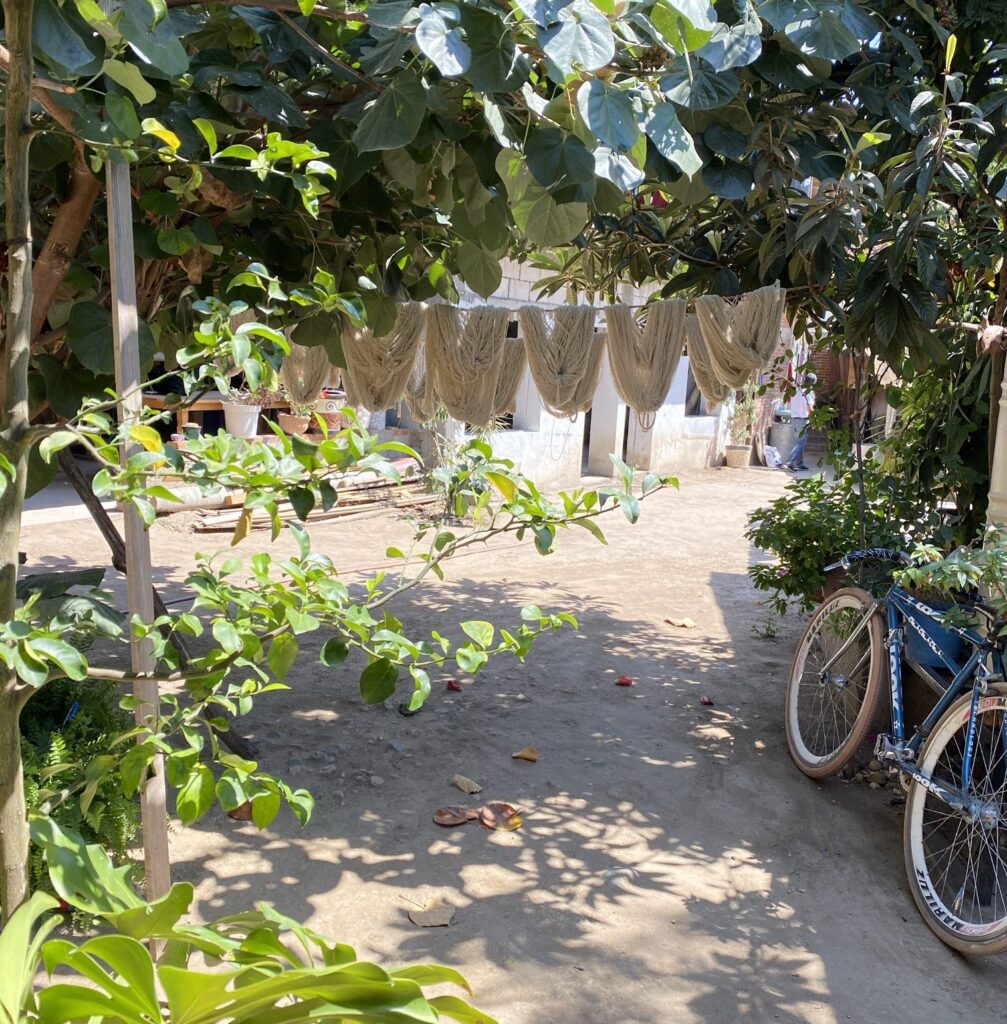
Small steps toward autonomy
Eventually, they had enough. One day on the radio, they overheard the government was offering grants and support to women in Oaxaca City. The journey was long, and incredibly difficult, but they opted to leave the village and aim for a better future.
In Oaxaca City, they were met with so many challenges. When hailing taxis, none would stop, because the group were unchaperoned, indigenous women. The older ladies could not communicate, because they spoke Zapotec, not Spanish. Some didn’t have shoes and were denied entry into businesses.
Miraculously, they still managed to get in touch with the local government. However, the women needed a formal proposal on paper to be in the running for financial support. Most had not finished any formal education, because in the village, the girls were married around 13 years old. Men said there was no need to learn.
Undeterred, they found a man with a typewriter. His service was to transcribe letters, but he sympathized with the women and offered to help with their written proposal. It was finally time to present their ideas to the government officials.
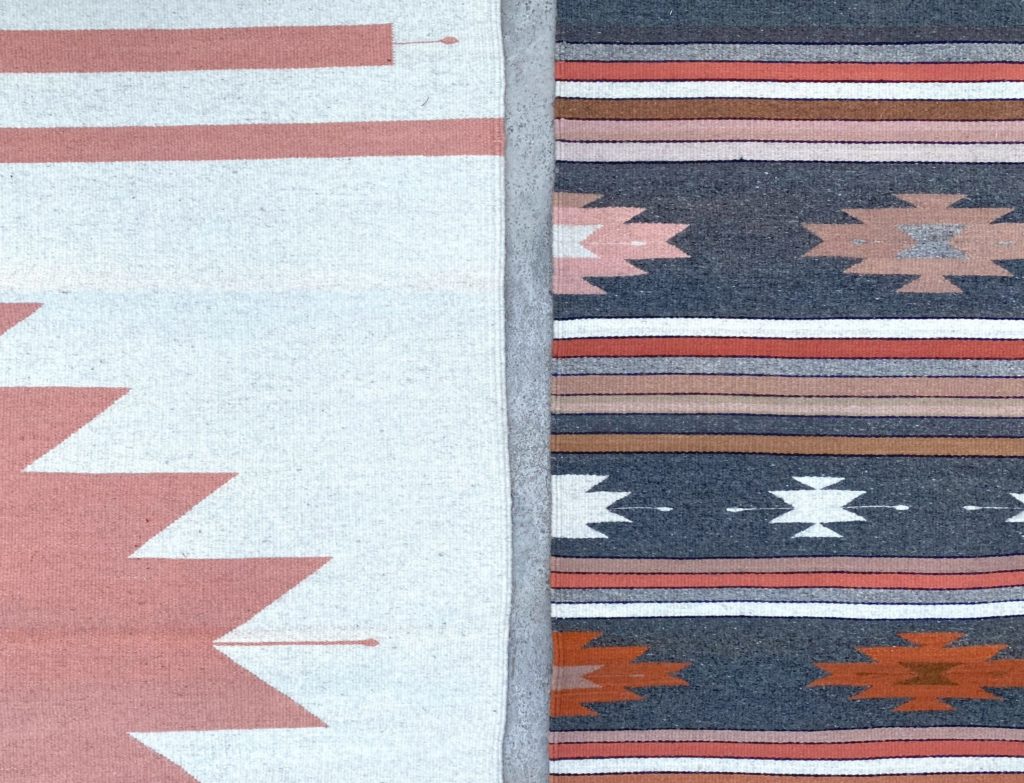
Ups and downs of hope
It didn’t work. The government did want to help the women, but only if they helped get them votes in return. The women were trying to escape exploitation and did not feel comfortable with this arrangement. So they decided to decline.
Crestfallen and out of ideas, the group wandered the city aimlessly. Then incredibly, their luck changed, as they connected with an NGO. This group was willing to take on the women and changing their village life for the better.
They offered psychological help to the women and the men in the village. Curriculum programs were put into place at the school so the next generation of young men could learn coping mechanisms, and the girls could feel empowered to make their own lives and incomes.
The NGO also taught the women how to handle their finances. The group began to come up with business and trade plans, then delegated various roles to each person, including treasurer. It didn’t matter the funds weren’t there yet: they had every confidence this was going to work.
They were so nervous to talk to the village about all this initially. Just 12 women had to talk to a room of 200 men to propose all these changes. But the board that ran the village let the women be upfront and say their piece.
All of these moving parts eventually evolved into these women honing in the trade of textiles, even though traditionally this was handled by men. Homes were set up for commerce, skills were taught and the women, over the years, began to gain their freedom from a toxic, patriarchal environment.
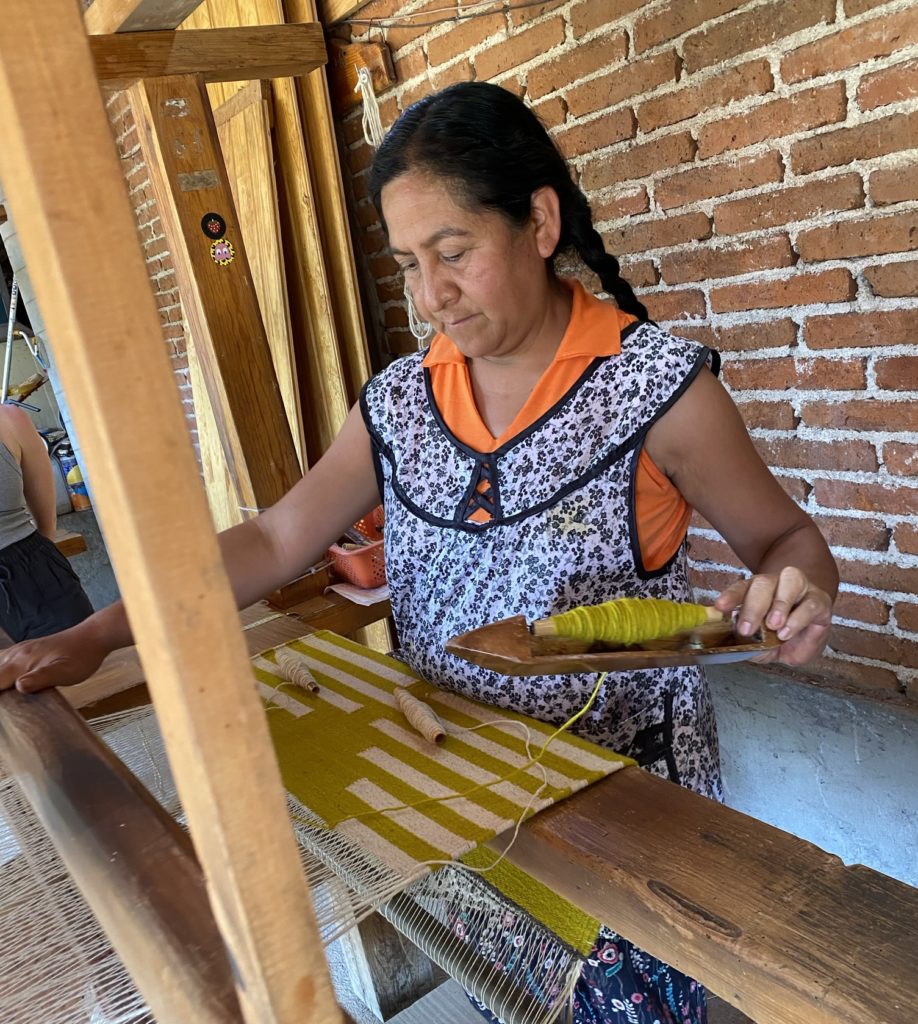
Present day rug bosses
Fast forward a couple decades to today and everyone is thriving. The handmade rugs made by the co-op are featured in museums and sold across the world. You can visit the hub and hear the whole story firsthand when you’re visiting Oaxaca, Mexico.
All dyes used are completely natural, made from things like flowers, plants, ash, and even bugs that are pink! Fermentation helps with the dye too.
Each rug design has a name. Some represent a rainbow, or the thunder and lightning. Another represents butterflies and freedom, or candles and light. A favorite of Pastora is the morning star and moon with connection to home, as the indigenous are very connected to each village each with a different color. Unbelievably, each one is different and every rug is done just by eyeing it!
This already sounds awesome, right? But the best part is these women are stockpiling profits from their crafts and projects. With these funds, they give back to the village and jumpstart a range of amazing initiatives, from recycling to senior care. All are free of charge to the residents.
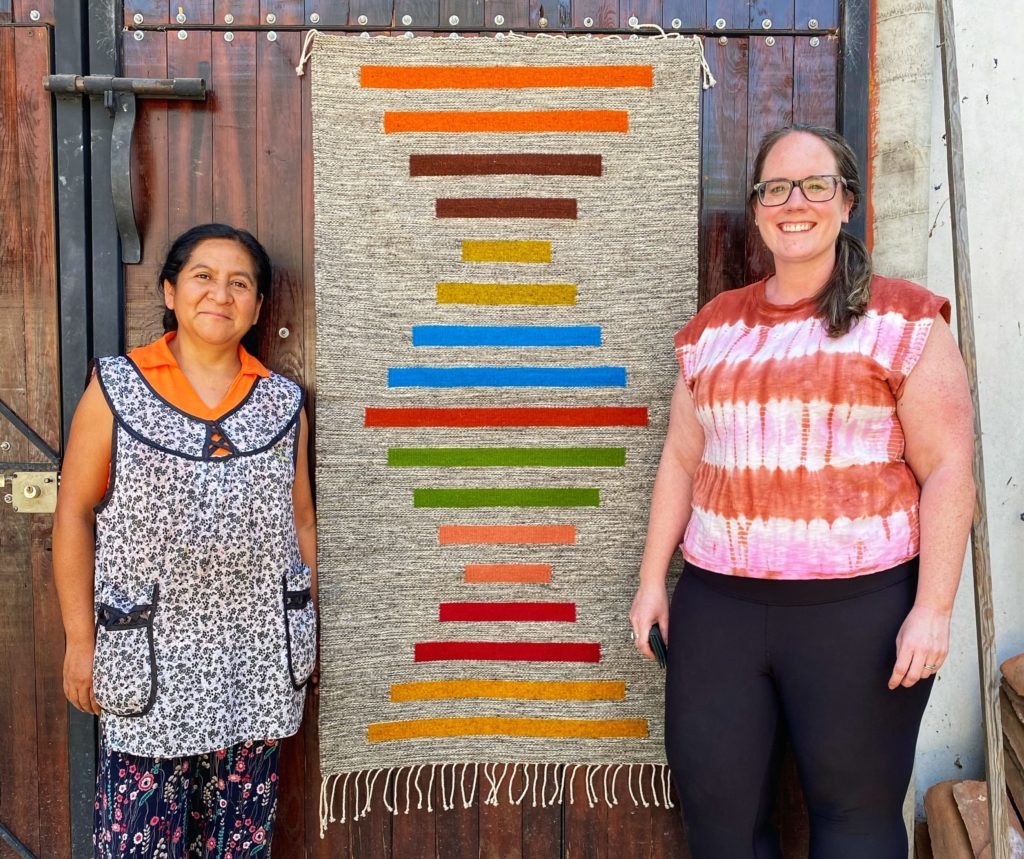
Visit Teotitlán del Valle and the Vida Nueva Women’s Weaving Cooperative, about 40 minutes outside of Oaxaca City. You can have a look around the workshops, hear the women’s stories, and of course see the collection of rugs. Take one with you or have it shipped if your suitcase is too full.
Have a look at Pure Wander to see some of the other beautiful locally-owned businesses I was honored to visit, all with similar experiences that’s well worth hearing about in person. You can meet more incredible people while supporting local businesses through trips with Purposeful Nomad. Check out their itineraries for 2022 and 2023!

